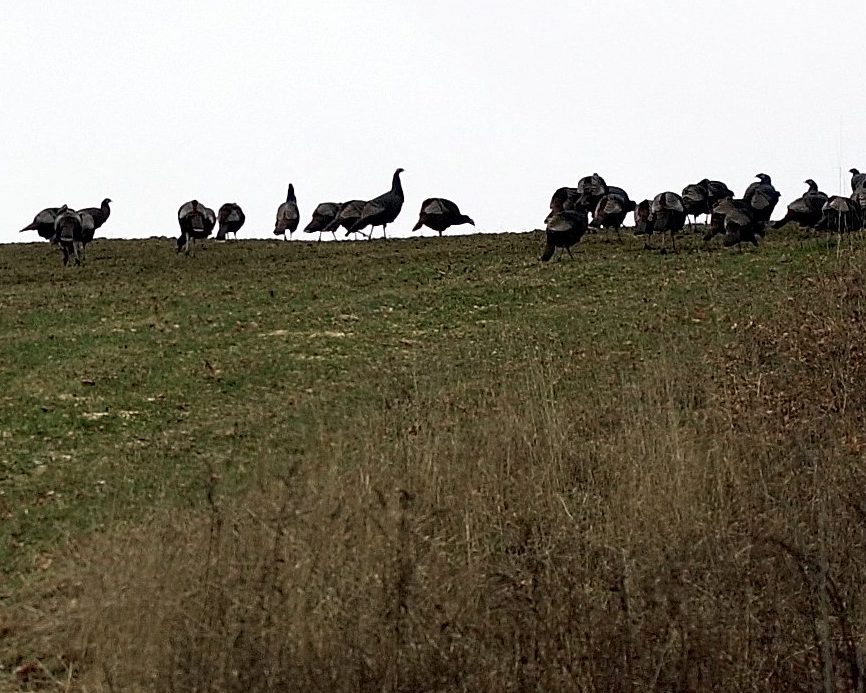Depending on who you talk to, modern computer technology is either going to lead to the demise of us all or solve all of our problems. I suspect the reality is somewhere in between.
In 2018, the Department of Inland Fisheries & Wildlife implemented instant, online tagging for big game such as white-tailed deer and wild turkey. As a result, biologists were able to track daily how many animals were harvested in each wildlife management district and collect other important data. What has been overlooked during this transition is how this new technology can vastly improve wildlife management.
According to 2018 harvest numbers provided by Judy Camuso, IF&W’s wildlife bureau director and Gov. Janet Mills’ nominee to head the department, turkey hunters tagged 6,147 tom turkeys in the spring of 2018. During the fall turkey hunt, with a longer season and with hunters allowed to harvest two birds of either sex, only 3,506 turkeys were tagged. This fall marks the first time that turkey harvest totals were available on a daily basis using the states’s integrated online tagging system. In the past, wildlife managers and staffers had to manually collect, sort and tally tagging data, often taking many months to report. Tagging data collection has now caught up with modern technology. It is now time for wild turkey management to do the same.
I will make my point.
IF&W describes their turkey management goals as very conservative and based on best-guess population estimates. I am not criticizing the department, because I believe it has done its best with the resources and tools available. To its credit, IF&W is in the early stages of a three-year turkey study to get better population estimates and better mortality data to more effectively inform management plans. As these population attributes are being refined, it is time for the department to develop a more flexible and adaptive harvest management system for wild turkeys.
In much of central and southern Maine, turkeys are abundant; in places, they are very abundant. While abundant turkey populations have their upside for hunters and non-hunters alike, overabundant turkeys can wreak havoc for farmers and gardeners. Yet in other areas, wild turkeys are still expanding and are in need of some level of protection.
With the new tagging technology and the department’s long-established wildlife management units, IF&W should be able to heavily crop over-abundant populations while also protecting others. And they can monitor the progress of turkey harvests on a daily basis, if they so desire.
There is a better management model.
According to IF&W, in the spring, before nesting, the turkey population is approximately 60,000 birds. The department admits this number is just a guess. I suspect it is much higher, but for this exercise, we will use their estimate.
If there are 60,000 turkeys at least half of these birds would be hens, which are inherently prolific breeders. These hens typically produce between nine and 13 eggs per nest. Assuming a meager 25 percent survival rate of hatched poults, it is likely the early summer turkey population blossoms to nearly 140,000 birds.
Now put that in context with the fall turkey harvest numbers of birds tagged by hunters in 2018, provided by IF&W — 3,506. Given that in the fall, the turkey population is at its highest point of the year and hunters can tag only two birds of either sex, the current management plan is woefully inadequate to remove the annual surplus. Worse yet, it appears the turkey population is poised to annually experience massive winter mortality. Why allow winter mortality or disease to trim turkey populations when hunters can be empowered to do so?
This legislative session, Sen. Russell Black, R-Wilton, will introduce legislation on behalf of the Sportsman’s Alliance of Maine that offers a new concept for biologists to consider, one which incorporates the new computer technology to more effectively manage wild turkeys.
The legislation would establish a new fall season that starts in October and runs through the end of December, identical to the current grouse-hunting season. It directs the department to estimate turkey harvest goals and issue corresponding permits within individual Wildlife Management Districts.
In practice, IF&W would issue fall turkey tags based on harvest quotas for each district. Hunters would be capped at eight birds a year — two male birds in the spring and six turkeys of either sex in the fall. There would also be a provision for the department to exceed this individual limit if it were not achieving adequate harvesting rates.
Biologists could then follow the online tagging totals daily, and once harvest levels are met, close the season.
Under such a system, turkey management would be flexible, based on sound science, and capable of refinement at a moment’s notice — exactly the way technology should assist wildlife managers.
David Trahan of Waldoboro, a former state legislator, is executive director of the Sportsman’s Alliance of Maine. This column does not necessarily reflect the opinion of that organization.
Send questions/comments to the editors.



Success. Please wait for the page to reload. If the page does not reload within 5 seconds, please refresh the page.
Enter your email and password to access comments.
Hi, to comment on stories you must . This profile is in addition to your subscription and website login.
Already have a commenting profile? .
Invalid username/password.
Please check your email to confirm and complete your registration.
Only subscribers are eligible to post comments. Please subscribe or login first for digital access. Here’s why.
Use the form below to reset your password. When you've submitted your account email, we will send an email with a reset code.